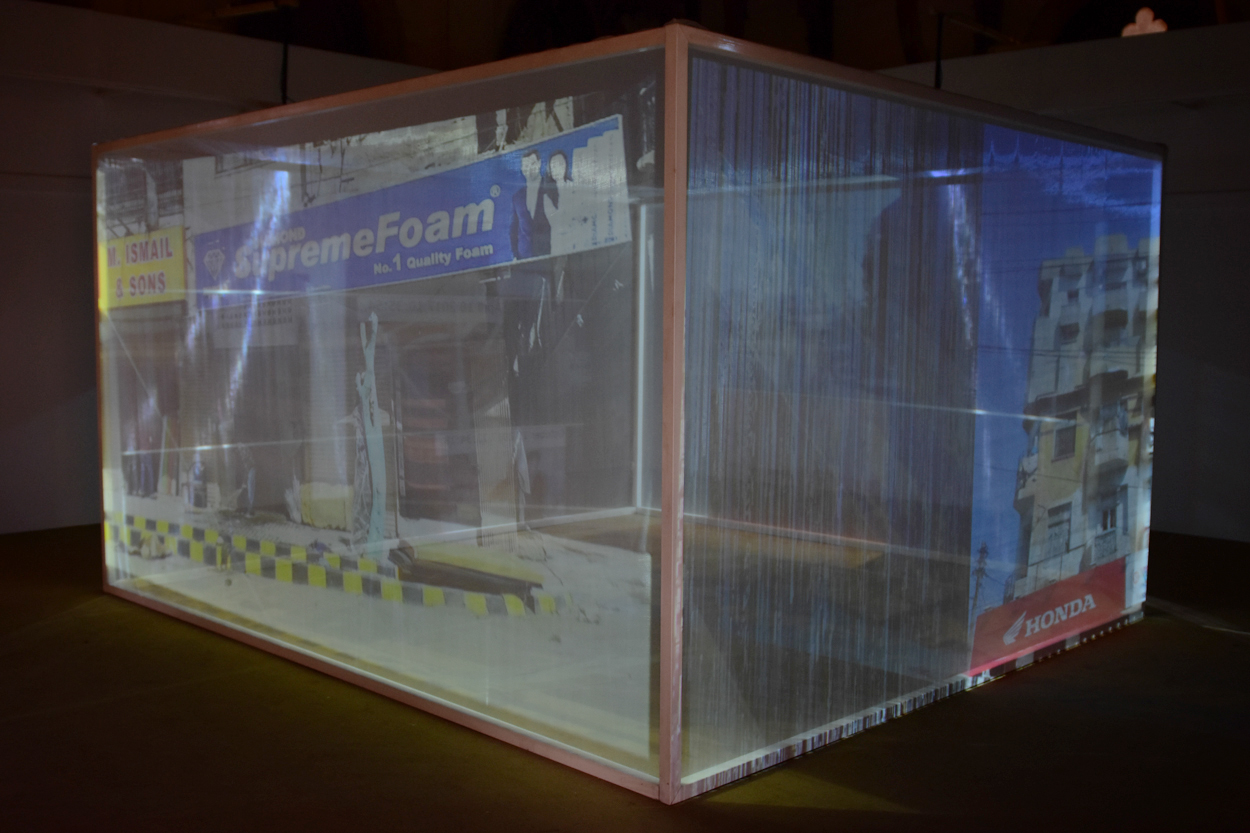Faisal Anwar
Born in 1970 in Murree (Pakistan)
Lives and works in Toronto (Canada)
Faisal Anwar, a new-media artist based out of Toronto, works locally and across the world. A graduate of the Canadian Film Centre’s Habitat-LAB, Anwar was earlier trained in graphic design at the National College of Arts, Lahore. Amongst his numerous international exhibitions, some of the significant ones include Winter Olympics Vancouver, 2010; the Aga Khan Museum, Toronto, 2016; Nuit-Blanche art festivals in Toronto and New York, 2011, 2015, and 2016; Six Degrees of Separation exhibition in India, Pakistan and Bangladesh, 2008. His project Tweetgarden was showcased at the Royal Ontario Museum in 2012. Several of Anwar's short films have been featured in festivals in Canada and abroad. Passionate about innovating within the scope of contemporary Art and hybrid design, Anwar’s art practice is about creating odd configurations integrating culture and technology. He explores social interactivity and collective behavior in modern urban cultures by tapping into people's perceptions of public and private spaces. To examine and express his insights about ideas of identity, pains of dislocation, and notions of power, Anwar's medium of art is data, social media, and recently Augmented realities. He investigates sociocultural alienation resulting from “globalization,” impacting every aspect of life and forming myriad homogenized visual similarities between world cities. Most of Anwar’s projects are participatory in nature inviting his audience to interact and evolve.
Faisal Anwar’s commissioned work for KB17 emanated from a workshop he conducted earlier in the year at the NJV in which he asked students of the school to map their city using cell phone photography. He writes of the project: “I See my Streets/I See Karachi is a new-media installation driven by youth and community participation. A population of over 24 million people with a remarkable 80% expansion over the past decade, Karachi is the world’s fastest-growing megacity. Her streets are a chaos of movement– people, traffic, graffiti, landmarks, and a dense network of colonial, modern, and makeshift architecture and spaces. My interest is in creating a new form of visually rich, image-centric, street views capturing hidden patterns of flow–no maps or numbers, only contemporary social networks will be used.”

I See my Streets/I See Karachi, 2017.
Participatory interactive Installation, video projections, social media interaction
457 cm. cube
Courtesy the artist

